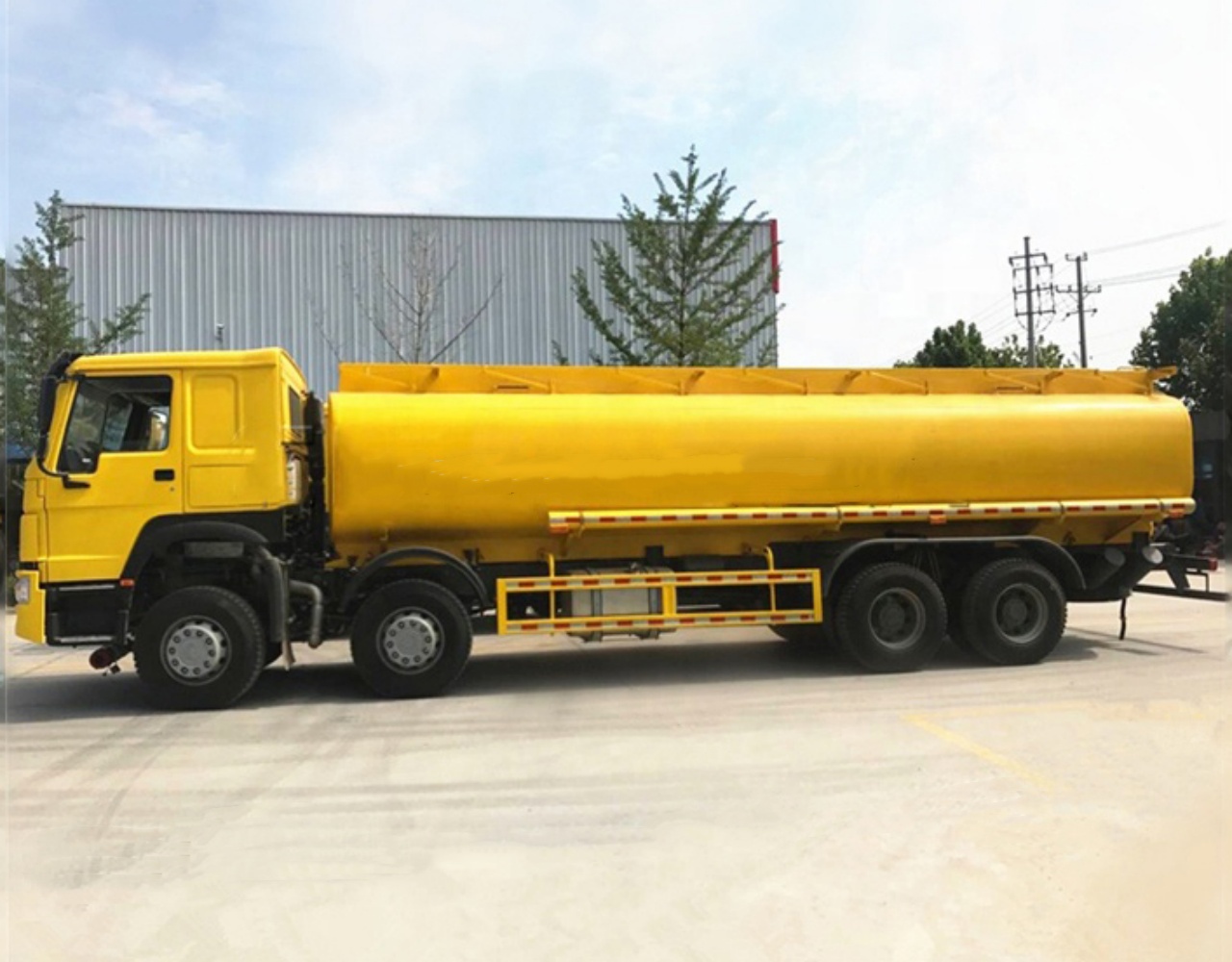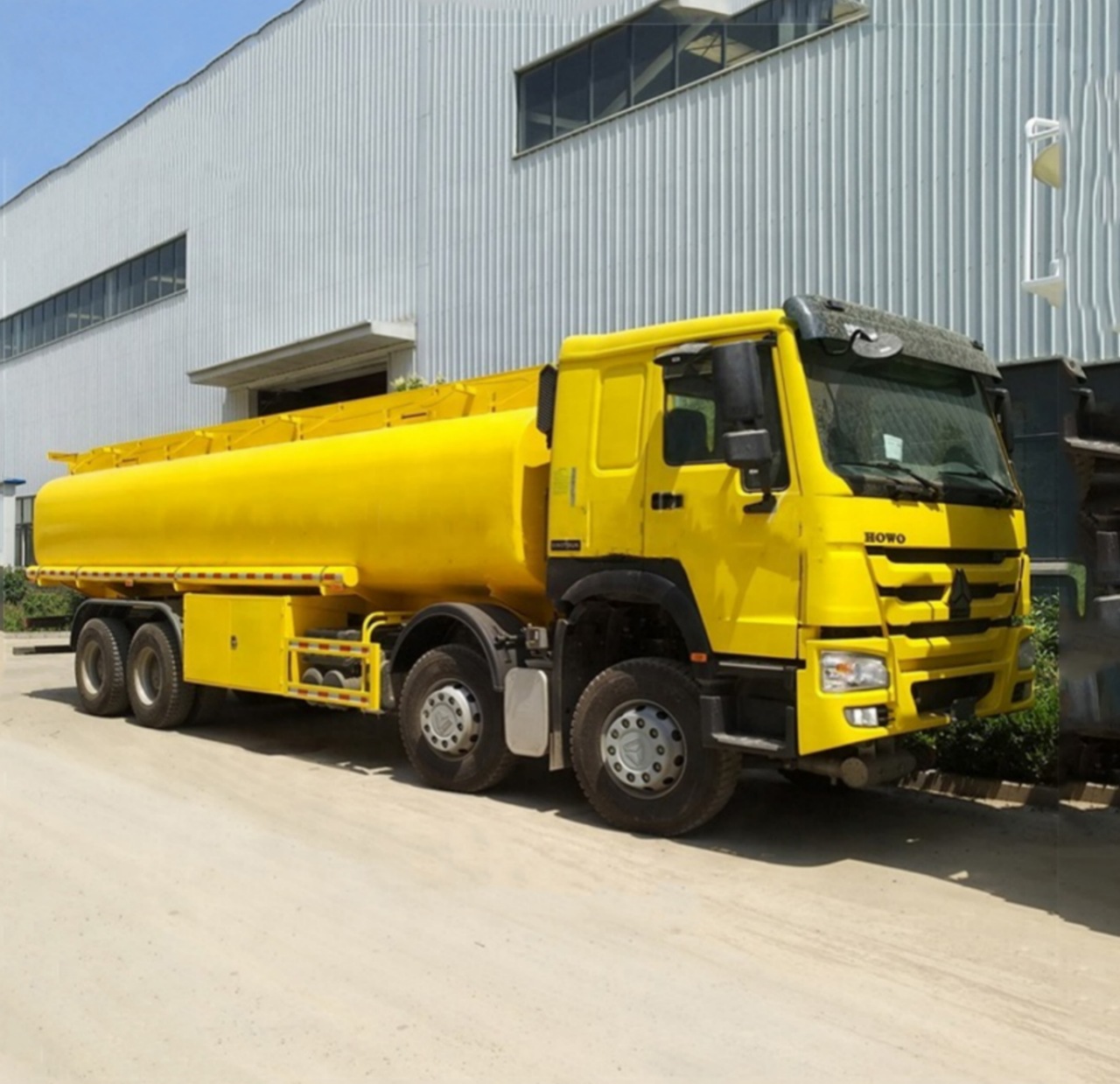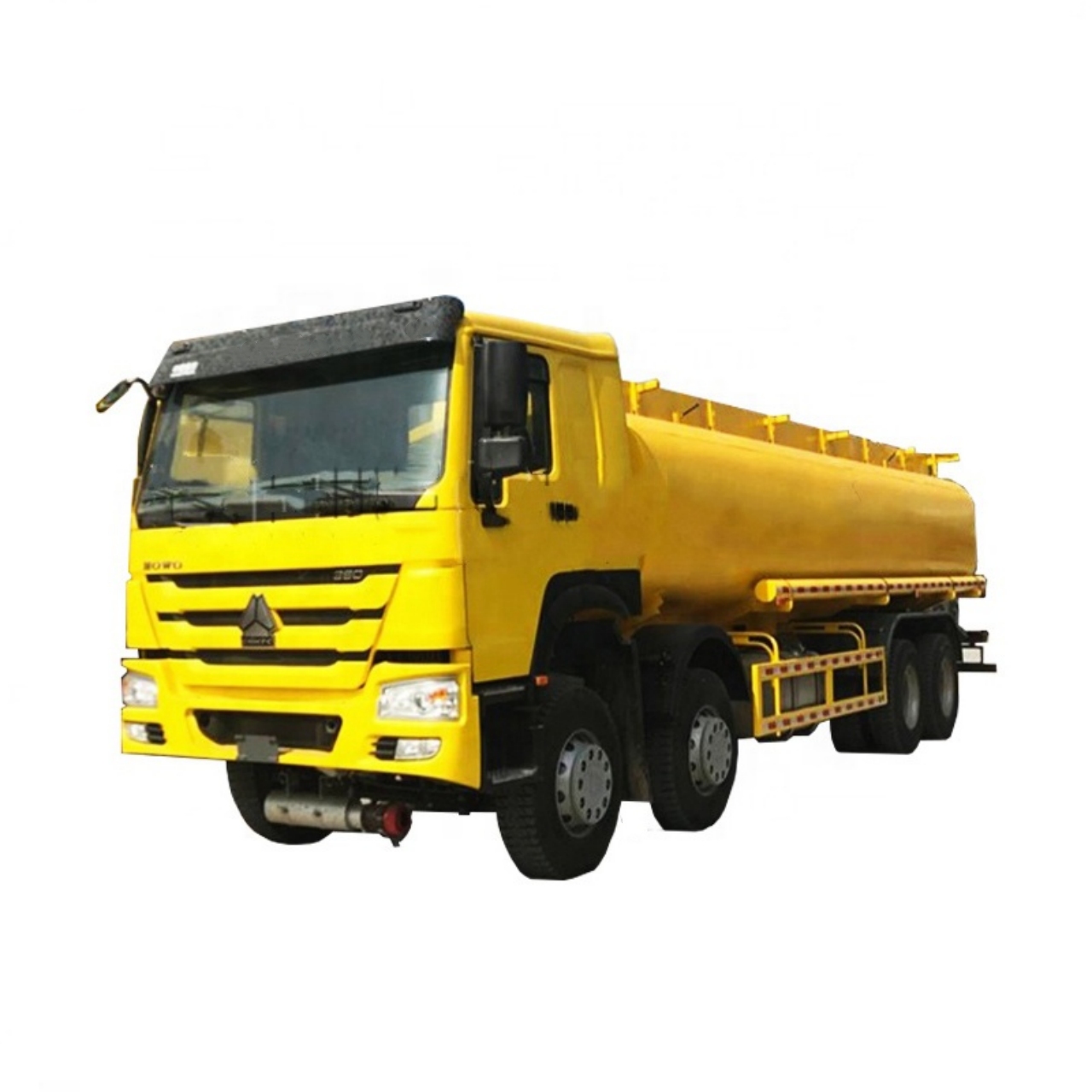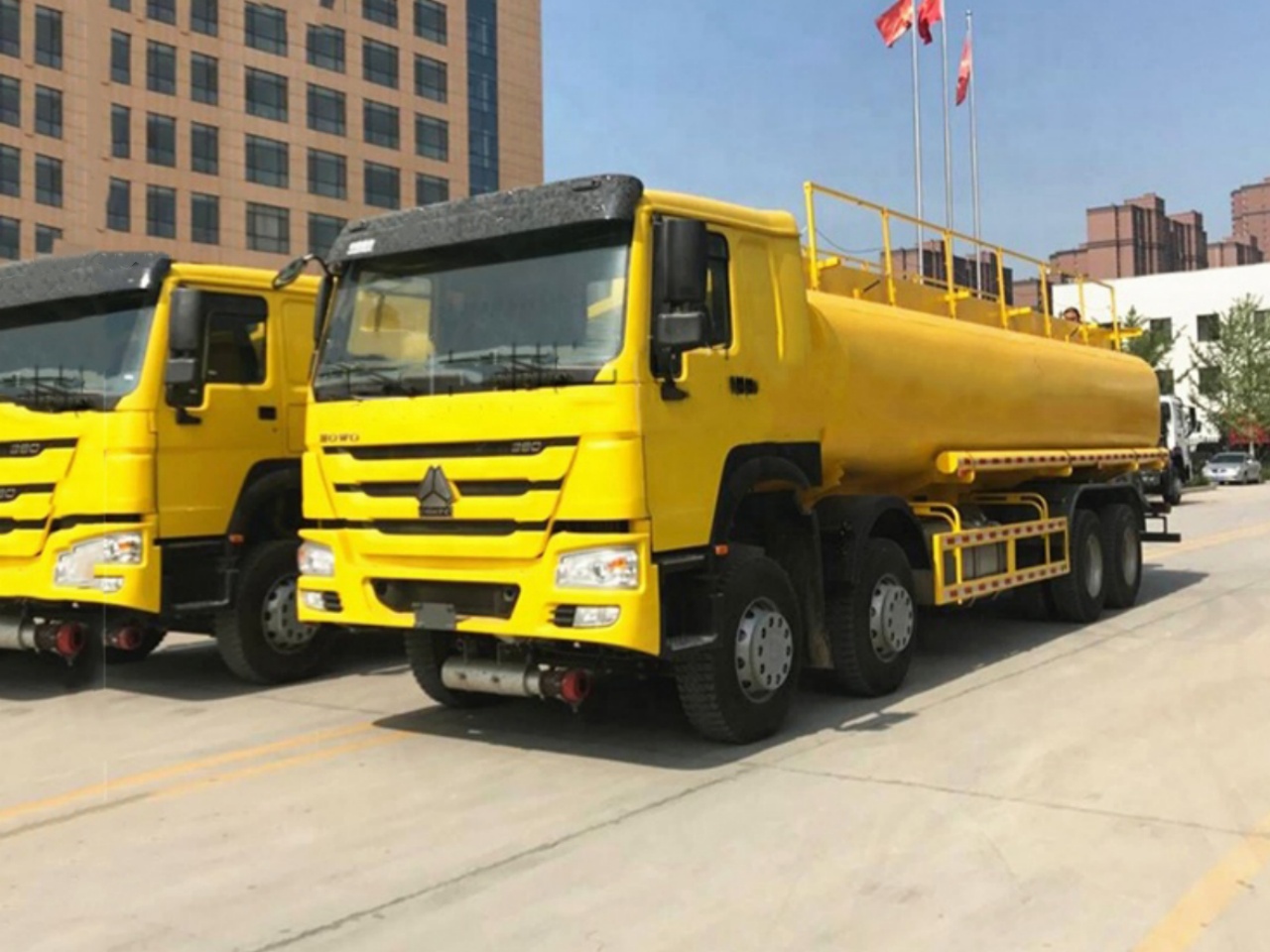Fuel tanker trucks are vital components of the global logistics chain, playing a critical role in transporting fuel from refineries to distribution centers, gas stations, airports, industrial sites, and even remote locations. One of the most common questions about these vehicles is: What is the capacity of a fuel tanker truck? The answer is not as straightforward as it may seem. The capacity depends on several factors, including the type of truck, design specifications, regional regulations, and the nature of the fuel being transported. In this article, we will delve into the various capacities of fuel tanker trucks, the types of tankers, and the factors that influence their size and volume.
Types of Fuel Tanker Trucks
Fuel tanker trucks are categorized based on their size, design, and purpose. Each category corresponds with different capacities and operational uses:
1. Small Tanker Trucks (Light Duty)
These are often used for local deliveries within cities or towns. They are commonly seen refueling gas stations or providing fuel to small businesses, construction sites, or farms.
- Capacity Range: 1,000 to 5,000 liters (264 to 1,320 gallons)
- Typical Configuration: 2-axle rigid chassis
- Advantages: Easier to maneuver in urban areas, requires lower licensing requirements in some jurisdictions.
2. Medium Tanker Trucks (Medium Duty)
Medium-sized tanker trucks bridge the gap between small delivery trucks and full-size road tankers. They are suitable for regional distribution.
- Capacity Range: 5,000 to 15,000 liters (1,320 to 3,960 gallons)
- Typical Configuration: 3-axle rigid or articulated design
- Use Case: Often used by fuel companies for mid-range deliveries to rural gas stations or businesses.
3. Large Tanker Trucks (Heavy Duty)
These are the most common types used for long-haul transport of fuels. They are built for maximum volume and efficiency.
- Capacity Range: 15,000 to 40,000 liters (3,960 to 10,570 gallons)
- Typical Configuration: Articulated tractor and trailer combination
- Use Case: Used for transporting fuel from refineries to distribution centers or high-volume gas stations.
4. Specialized Tankers (Extra Heavy Duty)
In some regions, especially in remote or mining areas like Australia’s outback, road trains and other specialized tanker configurations are used.
- Capacity Range: Up to 100,000 liters (26,400 gallons) or more
- Configuration: Multiple trailers (A-double, B-double, or even triple trailer road trains)
- Use Case: Used in scenarios where access to fuel is critical and frequent refueling is impractical.
Factors Influencing Tanker Capacity
While size categories give a general idea, several technical and regulatory factors determine the exact fuel capacity of a tanker truck.
1. Vehicle Design and Axle Load Limits
The physical design of the truck, including its chassis strength, axle configuration, and tire rating, dictates how much weight it can legally carry. Since fuel is heavy—gasoline weighs about 6.3 lbs/gallon and diesel about 7 lbs/gallon—this is a major factor.
2. Country-Specific Regulations
Transport regulations differ by country and even by region. For example:
- United States: Federal regulations allow a maximum of 80,000 lbs gross vehicle weight for most highway routes without special permits.
- Europe: EU standards vary, but most fuel trucks range from 32,000 to 40,000 liters.
- Australia: Permits allow multi-trailer road trains that carry up to 100,000 liters or more.
3. Fuel Type
The type of fuel also plays a role. For example, diesel is heavier and requires different safety protocols than gasoline or aviation fuel. This affects how much can be carried legally and safely.
4. Compartmentalization
Most large fuel tankers have internal compartments, allowing them to carry different types or grades of fuel in one trip. A 36,000-liter tanker might have 4 compartments: 10,000, 10,000, 8,000, and 8,000 liters. This design improves flexibility and prevents overloading any single compartment, enhancing safety.
5. Material of the Tank
Fuel tanks are typically made of aluminum or stainless steel. The weight and structural strength of the tank itself influence how much fuel can be carried. Lighter tank materials allow for slightly higher volumes within the legal weight limit.
Average Capacities in Common Markets
Here is a quick look at average fuel tanker truck capacities in different global markets:
| Region | Average Tanker Capacity | Common Configuration |
|---|---|---|
| USA | 34,000 – 40,000 liters | 5-axle tractor-trailer |
| EU (Germany, UK, etc.) | 30,000 – 38,000 liters | 4- or 5-axle articulated |
| Australia | 50,000 – 100,000+ liters | Road trains (multi-trailer) |
| Asia (China, India) | 20,000 – 35,000 liters | Rigid + trailer or semi-trailer |
Fuel Tanker Capacity by Fuel Type
Different fuels have different safety and handling requirements:
- Gasoline (Petrol): Usually stored in smaller compartments due to volatility.
- Diesel: Often carried in larger quantities because it’s less flammable.
- Jet Fuel (Aviation Kerosene): Requires specialized tanks and tight environmental controls.
- Biofuels and Ethanol Blends: May need corrosion-resistant linings due to alcohol content.
Legal and Safety Considerations
Fuel tanker trucks are subject to strict regulations, including:
- Hazmat Transport Licensing: Drivers often require a special hazardous materials (HAZMAT) license.
- Tank Inspection and Certification: Tanks must be regularly tested for pressure, leaks, and structural integrity.
- Spill Containment: Trucks must have emergency shut-off valves and spill containment systems.
- Fire Safety: Many tankers include grounding systems to prevent static discharge during fuel transfers.
Conclusion
The capacity of a fuel tanker truck varies significantly based on its design, intended use, and regional legal limits. While small urban delivery tankers might hold only 1,000 to 5,000 liters, large highway tankers typically transport 30,000 to 40,000 liters. In remote or specialized operations, such as mining or long-haul road trains, capacities can exceed 100,000 liters. Understanding these variations is critical for logistics planning, fuel distribution efficiency, and safety compliance.
Whether you’re involved in fuel logistics, fleet management, or simply curious, appreciating the diversity in fuel tanker capacities highlights the complexity and importance of this often-overlooked sector of transportation.





